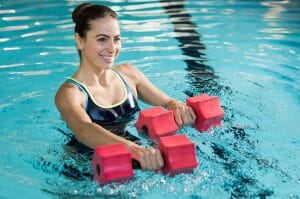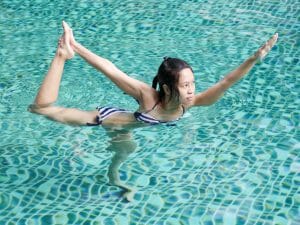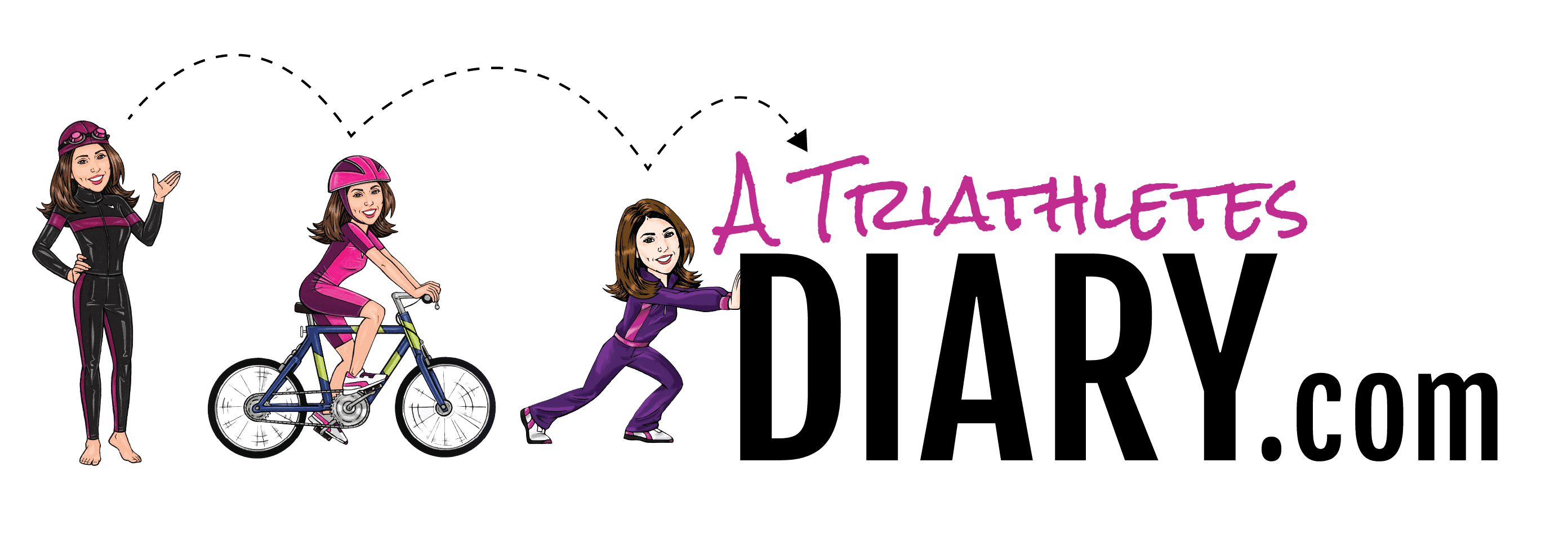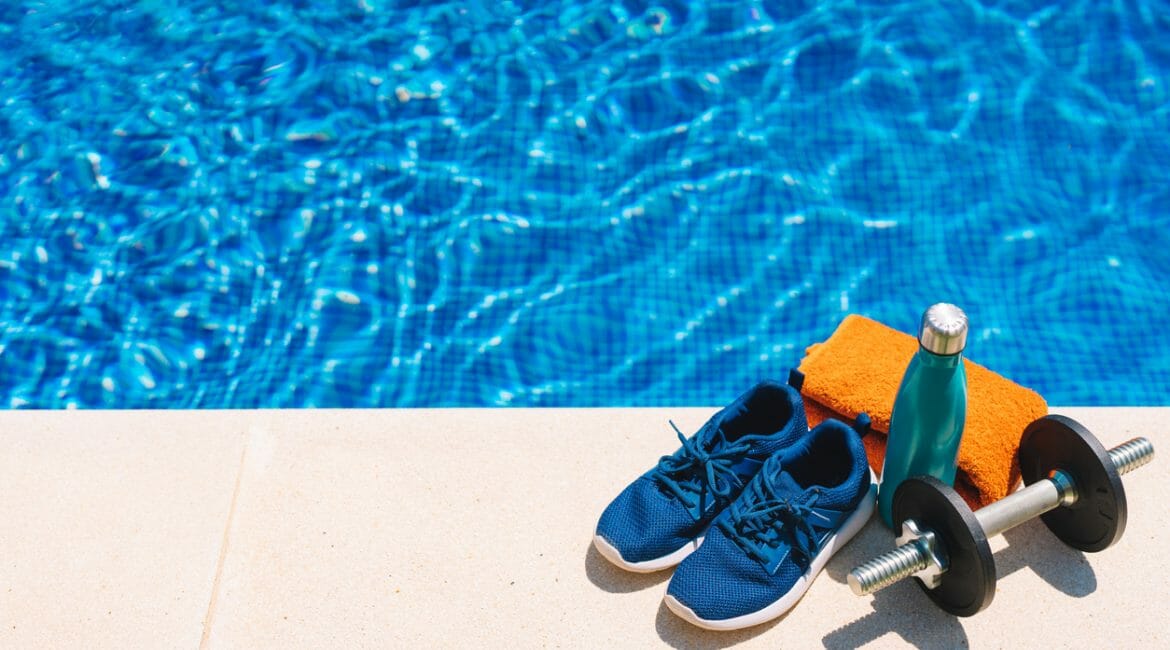Endless pools are compact-sized pools with an adjustable current. They are becoming increasingly popular as a versatile tool for fitness.
Whether you’re a seasoned swimmer or new to aquatic workouts, an endless pool can cater to your needs.
Swimming Workouts in an Endless Pool
The primary function of an endless pool is to enable continuous swimming without turns or laps. It is great for endurance training. The constant current also provides immediate feedback on your stroke, enabling you to work on technique and efficiency.
Here are some workouts. Try alternating daily.
Endurance Training
Warm-Up: Swim at a slow pace for 5 minutes to get your body warmed up.
Main Set: Increase the speed to a comfortable yet challenging level and swim continuously for 20 minutes.
Cool Down: Reduce the speed and swim at a slow pace for 5 minutes.
Speed Training
Warm-Up: Swim at a slow pace for 5 minutes.
Main Set: Increase the current to a high speed and sprint for 30 seconds, then reduce the speed and recover for 30 seconds. Repeat this sequence 10 times.
Cool Down: Swim slowly for 5 minutes.
Technique Drills
Single Arm Drill: Swim with one arm, keeping the other at your side. Do this for 2 minutes on each side.
Fist Drill: Swim with your hands in fists to improve your forearm’s effectiveness during the pull phase of your stroke. Do this for 4 minutes.
Catch-Up Drill: With each stroke, let your hand ‘catch up’ with the other before taking the next stroke. This drill helps improve stroke timing and length. Do this for 4 minutes.
Interval Training:
Swim fast for 10 seconds, then rest for 20 seconds. Repeat this sequence 10 times.
Kick Sets: Using a kickboard, practice different types of kicks such as flutter, breaststroke, and dolphin kicks. Do each type for 1 minute each.
Warm-Up: Swim at a slow pace for 5 minutes.
Main Set: Swim at a fast pace for 1 minute, then at a slow pace for 1 minute. Repeat this sequence 10 times.
Cool Down: Swim slowly for 5 minutes.
Strength and Power:
Warm-Up: Swim at a slow pace for 5 minutes.
Main Set: Increase the current to the maximum you can withstand and swim at this pace for 1 minute. Then, decrease the speed and recover for 2 minutes. Repeat this sequence 5 times.
Cool Down: Swim slowly for 5 minutes.
Strength Training

Water provides natural resistance, which can be harnessed for strength training. Exercises such as water jogging, leg lifts, and arm curls can be performed against the current, helping to build muscle strength and endurance. For an added challenge, consider using aquatic fitness equipment like water dumbbells or resistance bands.
Here are some workouts you can do:
Water Push-Ups: Lean against the side of the pool with your palms flat on the edge and arms straight. Bend your elbows and lower your body towards the wall, then push back to the starting position. This exercise targets your arms, chest, and shoulders.
Pool Planks: Using a pool noodle or a kickboard, hold it vertically with both hands. Press it into the water and lean your body forward until it’s at a 45-degree angle. Hold this position for 15-30 seconds to engage your core.
Resistance Kicks: Stand in the pool with your back against the wall, holding onto the edge for support. Extend one leg in front of you and kick against the water’s resistance, then switch legs. This exercise works your quadriceps and hamstrings.
Arm Curls: With water weights or foam dumbbells, stand in the pool with your feet shoulder-width apart. Hold the weights at your sides with your palms facing up. Bend your elbows and lift the weights towards your shoulders, then lower them back down.
Leg Lifts: Stand straight and hold onto the edge of the pool for support. Lift one leg out to the side against the resistance of the water, then lower it back down. Repeat on the other side. This exercise targets your hips and outer thighs.
Water Jogging: Jog in place in the pool, lifting your knees high and pumping your arms. The water’s resistance makes this simple movement a powerful strength training exercise.
Flexibility and Balance

Exercises that may be challenging on land can often be performed more easily in water due to its buoyancy. This makes an endless pool ideal for improving flexibility and balance.
Here are specific workouts you can do:
Leg Lifts:
Stand straight in the pool, hold onto the side for support, and lift one leg out to the side as high as you can comfortably go. Lower it back down slowly. Repeat 10-15 times on each leg.
Water Yoga:
Many yoga poses can be adapted for the pool. For example, try the tree pose: Stand on one leg, bend your other knee, and place the sole of your foot on the inside of your standing thigh or calf (avoid the knee). Hold for a few breaths, then switch sides.
Pool Tai Chi:
Tai Chi’s slow, controlled movements are perfect for the pool. Try the “wave hands like clouds” move: Stand with your feet shoulder-width apart, bend your knees slightly, and move your hands in front of your body as if you’re gently pushing and pulling a cloud. Shift your weight from one foot to the other as you move.
Flamingo Stand:
This exercise is excellent for improving balance. Stand on one foot while raising the other knee to hip level. Hold onto the edge of the pool if needed. Try to maintain the position for 30 seconds, then switch legs.
Aqua Jogging:
Aqua jogging is a low-impact exercise that can help improve balance. Try to mimic your normal running motion in the water. Use a flotation belt if needed.
Water Ballet:
Ballet moves can help improve both flexibility and balance. Try a simple plié in the water: Stand with your heels together and toes pointing out, then bend your knees while keeping your back straight. Straighten your knees to return to the starting position.
Floating Stretch:
Using a pool noodle or kickboard for support, stretch your body out into a floating position in the water. Gently kick your legs and paddle your hands to keep yourself afloat. This can help stretch out your body and improve balance.
Rehabilitation and Recovery
The buoyancy and resistance of water make it an excellent medium for rehabilitation from injuries. The adjustable current allows for gentle, low-impact workouts that can aid in recovery. Additionally, warm water can help soothe sore muscles and promote relaxation.
High-Intensity Interval Training (HIIT)
For a more intense workout, try doing HIIT in an endless pool. This could involve alternating between high-intensity exercises like fast swimming or water sprints and lower-intensity periods or rest.
Cool Down and Stretch
Don’t forget to cool down after your workout. Lower the current’s speed and spend a few minutes doing gentle swimming or treading water.
Remember, these are just examples and your workout should be tailored to your individual capabilities and goals. Always ensure you maintain good form throughout all exercises and adjust the speed of the current to a level that challenges you but is still safe and manageable.

